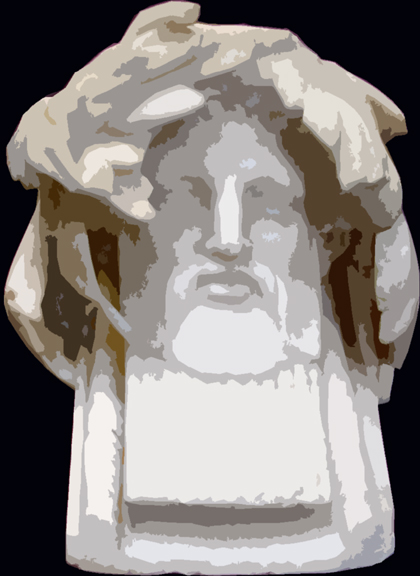
ABSTRACT: An Eclectic Locus Artis: The Casa di Octavius Quartio at Pompeii
© Francesca C. Tronchin 2005-2008
The
purpose of this dissertation is to re-examine the Casa di Octavius
Quartio at Pompeii (II.2.2) in terms of its decoration, its ownership,
and its place not only in Pompeii, but also in the greater sphere of
Roman houses. There are four main goals in this dissertation: to
publish and describe more fully the sculpture and surviving fresco
decoration from the house; to delineate the decorative function of the
painting and sculpture; to attempt a reconstruction of Roman meaning of
this house’s art collection; to correct some of the errors made
by previous scholars.
The owner
of the Casa di Octavius Quartio is not known at this time. He was not,
however, a priest of the Egyptian goddess Isis as once postulated. The
residents of this house did indeed have a great interest in Egypt, as
demonstrated in the fresco and statuette collections. The famous priest
depicted in room f of this house is most likely the son or grandson of
the family residing in the house, but not the owner of the property.
The
decoration of the Casa di Octavius Quartio is comprised of seven
frescoed rooms and more than twenty statuettes in marble and glazed
terracotta. The significance of this decoration lies in its status as a
compendium of the major subjects present in most decorative schemes of
well-to-do Roman homes of the early Empire in Italy. The frescoes and
sculpture represent the eclectic taste of Roman elite patrons and
demonstrate the artistic syncretism that combined Egyptian and Greek
prototypes, resulting in a thoroughly Roman ensemble. References to
exotic lands, Greek epic, Latin literature, the theater, Isiac
religion, hunting, and the Dionysiac thiasos are among the allusions in
this house’s painting and sculpture. The variation of these
themes is significant for it underscores the inherent eclecticism in
all of Roman art and demonstrates the desire of Roman patrons to
decorate their homes with a wide variety of subject matter. Comparative
analysis of archaeological remains and literary sources reveals that
making a multiplicity of references in one’s decorative ensemble
was actually preferred by Pompeian homeowners and the Casa di Octavius
Quartio can as a primer for the catholic iconographical tastes of the
time.
This
dissertation includes an appendix detailing all the finds from the Casa
di Octavius Quartio—information that has not been published
before. More than 140 photographs, plans, and diagrams illustrate the
dissertation; more than half the photographs are new ones taken by the
author.
Return to Francesca Tronchin's main page

